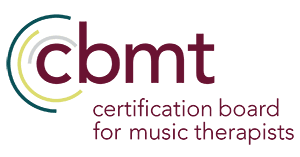CBMT and the Music Therapy Profession Today
When you step back and take a look at the big picture, there is good news to report. Morgan Harper Nichols famously said: “One day you will look back and see that all along you were blooming,” and nothing could be more true in this profession. For decades, music therapy has shown steady growth, and while the pandemic temporarily slowed progress, everything picked back up in 2021 and has continued since.
“When testing centers shut down and candidates were not able to finish their internships or educational requirements, everyone was isolated, and we definitely felt what was happening, but growth continued even then,” said Joy Schneck, CBMT Executive Director. “A few months ago, we announced we hit the 10,000+ milestone, and now we’ve already well surpassed it. These are active MT-BC practicing music therapists, and their numbers continue to exceed expectations. This is a very strong profession.”
The level of excellence in the profession is even more a source of pride than its growth, and maintaining the industry’s standards always comes first.
One area where excellence and growth seem to work in tandem has been the state recognition plan. It has been a primary focus of CBMT and AMTA since 2005 when the two national organizations started the project jointly. This year, four new states – Washington, Illinois, Ohio, and most recently, Connecticut – now require state licensure to practice in the profession of music therapy.
Official state recognition is the first step toward successful inclusion within health and education regulations. This possibly allows for improved employment opportunities and increased access to reimbursement and state funding streams, such as private insurance, Medicaid waivers, and special education.
Learn more about state licensure requirements and the importance of state recognition.
It’s a national voluntary certification program, with different states having different requirements. With states that mandate licensing, the MT-BC credential is required. CBMT provides digital badging for verification, as well as paper certificates, to the new music therapists being certified every day in their states.
Even in states where no registration or licensure is required, employers require proper education and training, as well as CBMT’s MT-BC certificate.
“This current state of affairs in music therapy is something we’ve all worked together to bring about,” Joy added. “We should all be proud of what has been accomplished by our profession. It only confirms how important it is for all of us to support one another – and shows what we can do when we work together. This is a vibrant profession in large part because we each have an important role to play, and we are all committed to the practice of music therapy.”
The healthy state of the music therapy profession has indeed been a joint effort – from the schools to the students to the music therapy employers to the national organizations that shepherd the growth of the profession – all focused on expanding the depth and breadth of the profession in order to reach the people whose lives can be changed by music therapy.
To learn more about the music therapy profession and CBMT’s role in this profession, visit cbmt.org.



